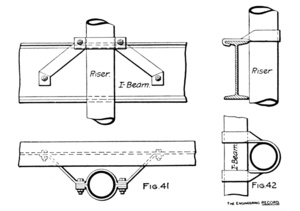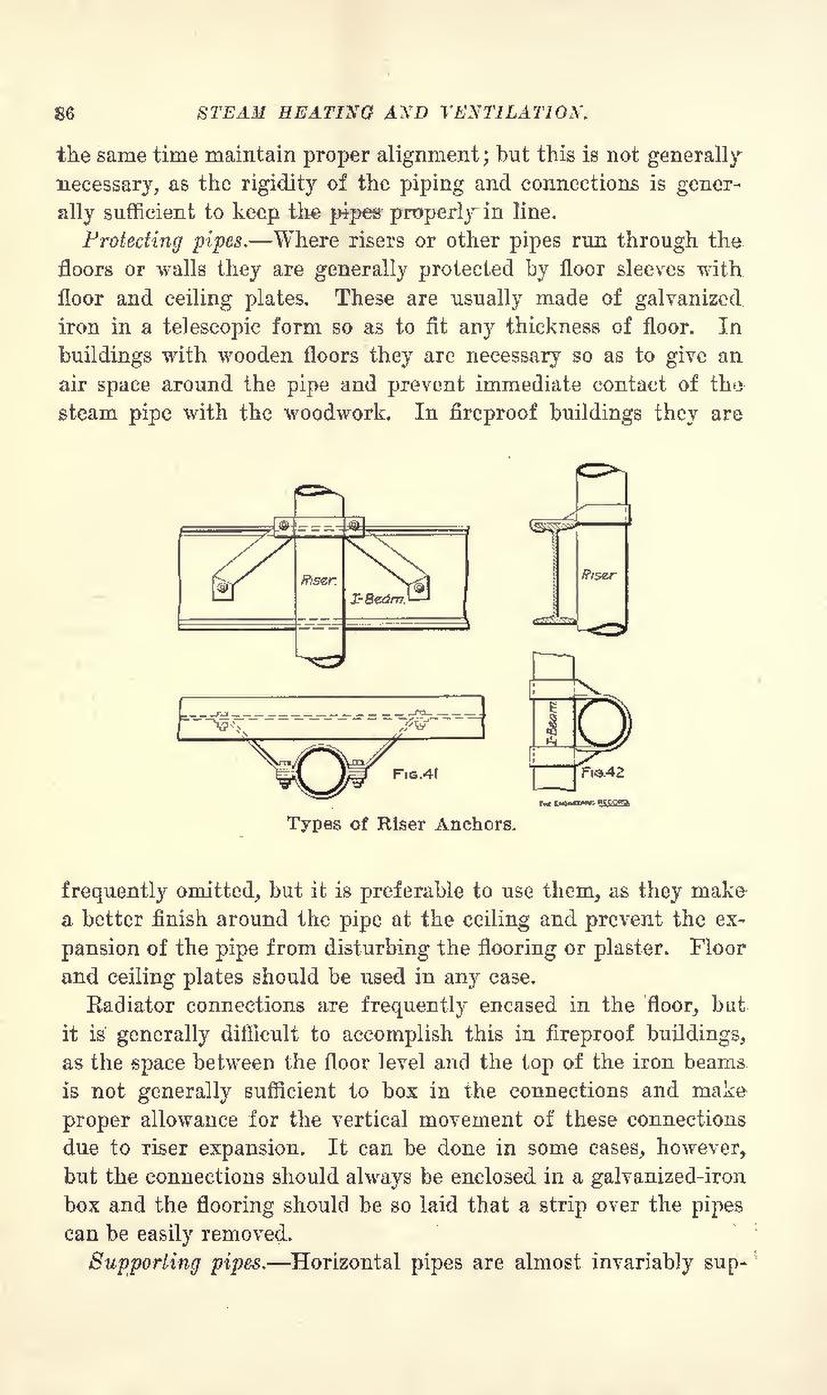the same time maintain proper alignment; but this is not generally necessary, as the rigidity of the piping and connections is generally sufficient to keep the pipes property in line.
Protecting pipes.—Where risers or other pipes run through the floors or walls they are generally protected by floor sleeves with floor and ceiling plates. These are usually made of galvanized iron in a telescopic form so as to fit any thickness of floor. In buildings with wooden floors they are necessary so as to give an air space around the pipe and prevent immediate contact of the steam pipe with the woodwork. In fireproof buildings they are

Types of Riser Anchors.
frequently omitted, but it is preferable to use them, as they make a better finish around the pipe at the ceiling and prevent the expansion of the pipe from disturbing the flooring or plaster. Floor and ceiling plates should be used in any case.
Radiator connections are frequently encased in the floor, but it is generally difficult to accomplish this in fireproof buildings, as the space between the floor level and the top of the iron beams is not generally sufficient to box in the connections and make proper allowance for the vertical movement of these connections due to riser expansion. It can be done in some cases, however, but the connections should always be enclosed in a galvanized-iron box and the flooring should be so laid that a strip over the pipes can be easily removed.
Supporting pipes.—Horizontal pipes are almost invariably sup-
